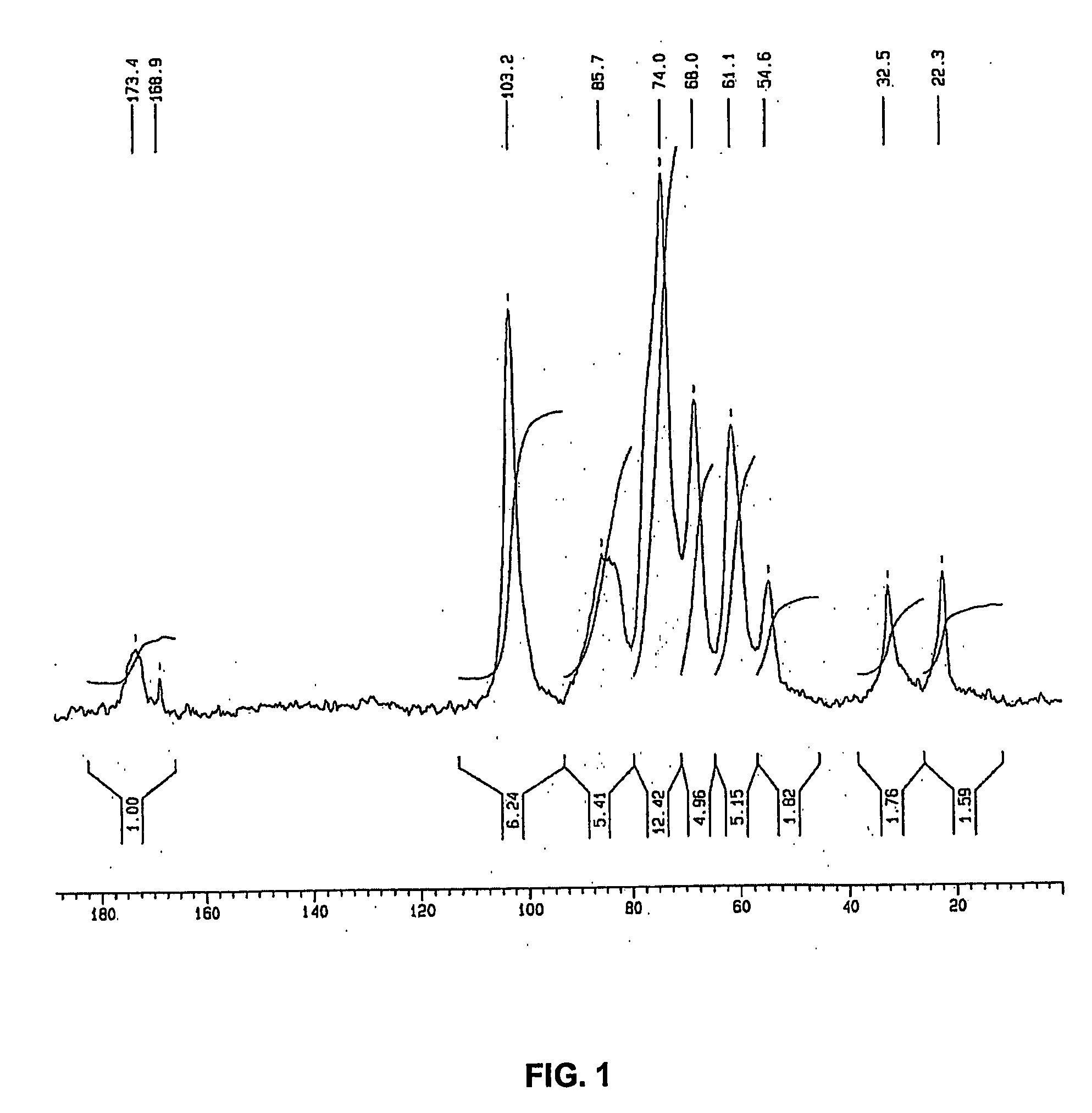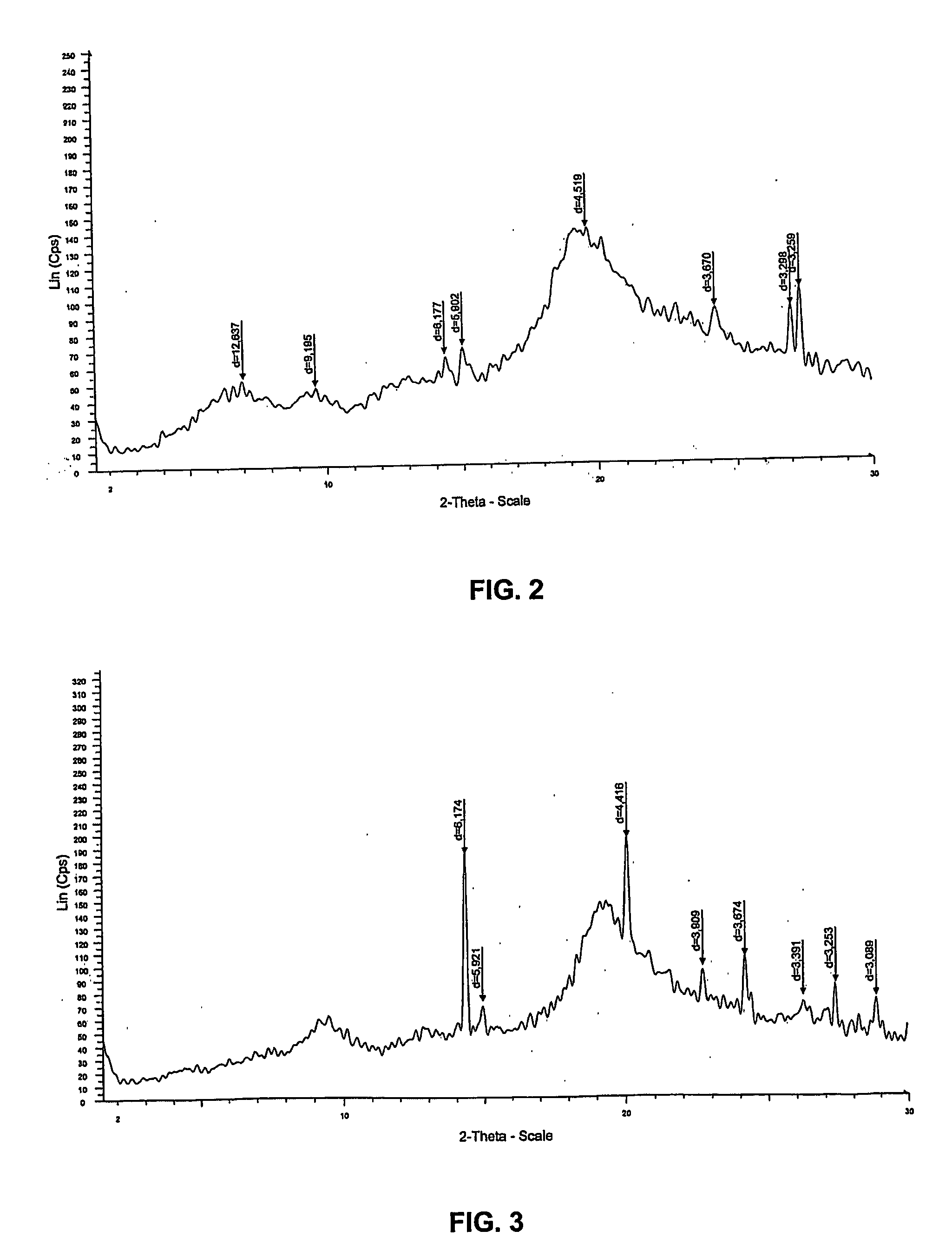Cell wall derivatives from biomass and preparation thereof
a technology of cell wall and biomass, which is applied in the preparation of sugar derivatives, sugar derivatives, biocides, etc., can solve the problems of difficult extraction of chitin and chitosan, difficulty in product development by users, and inability to reproduce chitin and chitosan quality
- Summary
- Abstract
- Description
- Claims
- Application Information
AI Technical Summary
Benefits of technology
Problems solved by technology
Method used
Image
Examples
example 1
Alkaline Digestion of Aspergillus niger mycelium
[0129] This example illustrates the first step in the method for isolating cell wall derivatives from fungal biomass according to the present invention. The biomass was obtained as side-product of a cultivation process for preparing citric acid using Aspergillus niger.
[0130] In this example, 995 g of the biomass containing 71% of water was collected and incubated in a reaction containing 2 liters of water and 93 g of sodium hydroxide pellets at room temperature, to reach a final biomass concentration of 3.4% (w / v). In this example, final concentration of NaOH comprised 10.6% (w / v) and the ratio of NaOH to biomass (dry weight) was 32%. After 26 hours, the mixture was filtered to collect the insoluble fraction of the residual biomass, which was washed repeatedly until neutral pH was obtained. In this example, the dry mass of the insoluble fraction was 145 g. The analysis of this fraction by 13C-NMR in solid phase revealed that mainly a...
example 2
Alkaline Digestion of the Mycelium of Aspergillus niger
[0132] This example also illustrates the first step in the method for isolating cell wall derivatives from fungal biomass according to the present invention. The biomass was obtained as side-product of a cultivation process for preparing citric acid using Aspergillus niger.
[0133] In this example, the mycelium of Aspergillus niger was treated according to different conditions. Assays No. 1 to 4 were performed in a 10 L-reactor, and assays No. 5 to 6 in a 30 L-prototype reactor. Assays 1 to 5 were performed in one step, while assays 4′ and 6 were performed in two steps. In assay No 4′, the biomass was treated with a first NaOH solution (3.4%), then filtered and treated again in a second NaOH solution (2.8%). In assay No 6, the biomass was separated in two fractions successively placed in the reactor together with a low amount of NaOH followed by a higher amount of NaOH. Results are shown in Table 1.
TABLE 1mFratiommyceliumCmyce...
example 3
Enzymatic β-Glucanases Preparations
[0136] This example illustrates a preferred procedure for testing several commercial preparations of β-glucanases for use in a method according to the present invention. β-glucanase activity can be quantified from standard curves established with pure reference β-glucanase enzymes that are reacted with standard β-glucan substrates. For instance for testing EC 3.2.1.6 β-glucanase activity, lichenase (Megazyme) or β-glucanase (Fluka) can be reacted with barley β-glucan substrate (Megazyme), for testing EC 3.2.1.39 β-glucanase activity, an endo-β-(1,3) enzyme (Megazyme, Fluka) can be reacted with pachyman or curdlan substrates (Megazyme), for testing EC 3.2.1.58 activity, an exo-β-glucanase (Megazyme) can be reacted with laminarin or schleroglucan substrates (Sigma, Megazyme), and for testing EC 3.2.1.75 β-glucanase activity, a β-(1.6) glucanase can be reacted with pustulan (Sigma). The β-glucanase activity (in U, unit) is defined as the amount of en...
PUM
| Property | Measurement | Unit |
|---|---|---|
| temperature | aaaaa | aaaaa |
| temperature | aaaaa | aaaaa |
| temperature | aaaaa | aaaaa |
Abstract
Description
Claims
Application Information
 Login to View More
Login to View More - R&D
- Intellectual Property
- Life Sciences
- Materials
- Tech Scout
- Unparalleled Data Quality
- Higher Quality Content
- 60% Fewer Hallucinations
Browse by: Latest US Patents, China's latest patents, Technical Efficacy Thesaurus, Application Domain, Technology Topic, Popular Technical Reports.
© 2025 PatSnap. All rights reserved.Legal|Privacy policy|Modern Slavery Act Transparency Statement|Sitemap|About US| Contact US: help@patsnap.com



